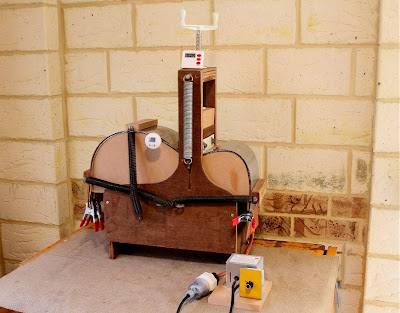I've been working on this East Indian Rosewood/Sitka Spruce OM at more or less the same pace as I have the Claro Walnut/Redwood guitar featured in recent posts, but progress has fallen behind a little in recent weeks as I've focussed my attention on preparing the Walnut/Redwood guitar for finishing.
While I wait patiently for a trio of fine days suitable for spraying, it's a good opportunity to catch up a little where this black and red OM is concerned. The purfling has been in place for a week or two, and with the end wedge now installed, I've begun the process of gluing the ebony bindings in place. It's not a task I particularly look forward to, which hints at the fact that I'm yet to feel I've attained any level of mastery over this particular aspect of guitar construction.
It will certainly be intriguing to assess the two guitars' responsiveness and tonal characteristics individually, but I'll be especially interested to make comparisons between them. Shaping of the soundboard braces on both guitars was completed at around the same time, the end result being what I perceived to be similarly responsive tops once I'd concluded the cycle of brace shaving, tapping and flexing. If popular wisdom proves to be well founded, the wood species used in these guitars will have a significant influence on the sound I'm ultimately able to coax out of them, and they'll show themselves to be very different from one another, tonally speaking. On the other hand, my assessment could lend weight to the theory that the sound of an instrument reflects the builder's individual style and methods as much as it does the materials used in its construction, in which case their tonal differences might be more difficult to detect. Whatever the result, and for the first time ever, I can confidently predict that I'll be able to share sound files and/or videos with you here on this blog. Eventually, that is!
Cheers
Pete





















































